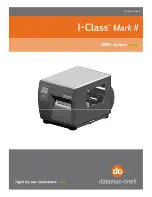
[1-3 Working with Refrigerant Piping ]
- 11 -
HWE14080
GB
1 Check
Before
Servicing
1-3-3
Vacuum Drying
1. Vacuum pump with a reverse-flow check valve (Photo1)
To prevent the vacuum pump oil from flowing into the refrigerant circuit during power OFF or power failure, use a vacuum
pump with a reverse-flow check valve.
A reverse-flow check valve may also be added to the vacuum pump currently in use.
2. Standard of vacuum degree (Photo 2)
Use a vacuum pump that attains 0.5Torr(65Pa) or lower degree of vacuum after 5 minutes of operation, and connect it directly
to the vacuum gauge. Use a pump well-maintained with an appropriate lubricant. A poorly maintained vacuum pump may not
be able to attain the desired degree of vacuum.
3. Required
precision of vacuum gauge
Use a vacuum gauge that registers a vacuum degree of 5Torr(650Pa) and measures at intervals of 1Torr(130Pa). (A recom-
mended vacuum gauge is shown in Photo2.)
Do not use a commonly used gauge manifold because it cannot register a vacuum degree of 5Torr(650Pa).
4. Evacuation
time
After the degree of vacuum has reached 5Torr(650Pa), evacuate for an additional 1 hour. (A thorough vacuum drying re-
moves moisture in the pipes.)
Verify that the vacuum degree has not risen by more than 1Torr(130Pa) 1hour after evacuation. A rise by less than
1Torr(130Pa) is acceptable.
If the vacuum is lost by more than 1Torr(130Pa), conduct evacuation, following the instructions in section 6. Special vacuum
drying.
5. Procedures for stopping vacuum pump
To prevent the reverse flow of vacuum pump oil, open the relief valve on the vacuum pump side, or draw in air by loosening
the charge hose, and then stop the operation.
The same procedures should be followed when stopping a vacuum pump with a reverse-flow check valve.
6. Special vacuum drying
When 5Torr(650Pa) or lower degree of vacuum cannot be attained after 3 hours of evacuation, it is likely that water has pen-
etrated the system or that there is a leak.
If water infiltrates the system, break the vacuum with nitrogen. Pressurize the system with nitrogen gas to
0.5kgf/cm
2
G(0.05MPa) and evacuate again. Repeat this cycle of pressurizing and evacuation either until the degree of vac-
uum below 5Torr(650Pa) is attained or until the pressure stops rising.
Only use nitrogen gas for vacuum breaking. (The use of oxygen may result in an explosion.)
7. Triple
Evacuation
The method below can also be used to evacuate the system.
Evacuate the system to 4,000 microns from both service valves. System manifold gauges must not be used to measure vac-
uum. A micron gauge must be used at all times. Break the vacuum with Nitrogen (N2) into the discharge service valve to 0
PSIG.
Evacuate the system to 1,500 microns from the suction service valve. Break the vacuum with Nitrogen (N2) into the discharge
service valve to 0 PSIG.
Evacuate the system to 500 microns. System must hold the vacuum at 500 microns for a minimum of 1 hour.
Conduct a rise test for a minimum of 30 minutes
(Photo1) 15010H
(Photo2) 14010
Recommended vacuum gauge:
ROBINAIR 14010 Thermistor Vacuum Gauge
Содержание R410A
Страница 1: ......
Страница 11: ... 2 HWE14080 GB ...
Страница 25: ... 16 HWE14080 GB ...
Страница 38: ... 2 6 System Connection Example 29 HWE14080 GB 2 Restrictions ...
Страница 57: ... 2 10 Restrictions on Refrigerant Pipes 48 HWE14080 GB ...
Страница 59: ... 50 HWE14080 GB ...
Страница 71: ... 62 HWE14080 GB ...
Страница 95: ... 86 HWE14080 GB ...
Страница 121: ... 5 3 Operation Flowcharts 112 HWE14080 GB ...
Страница 123: ... 114 HWE14080 GB ...
Страница 159: ... 150 HWE14080 GB ...
Страница 243: ... 7 8 Error Code Definitions and Solutions Codes 7000 7999 234 HWE14080 GB ...
Страница 309: ... 300 HWE14080 GB ...
Страница 346: ......
















































